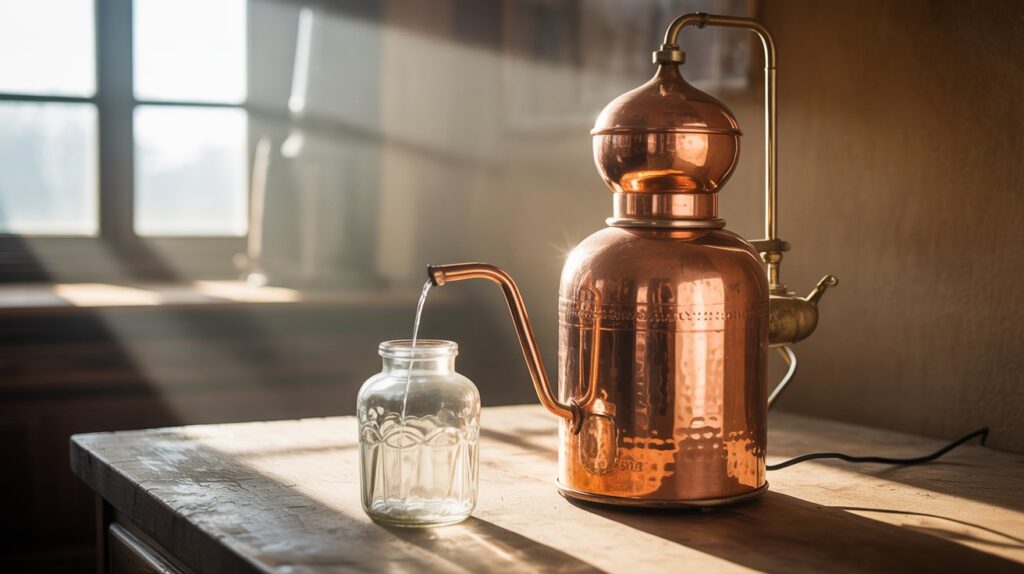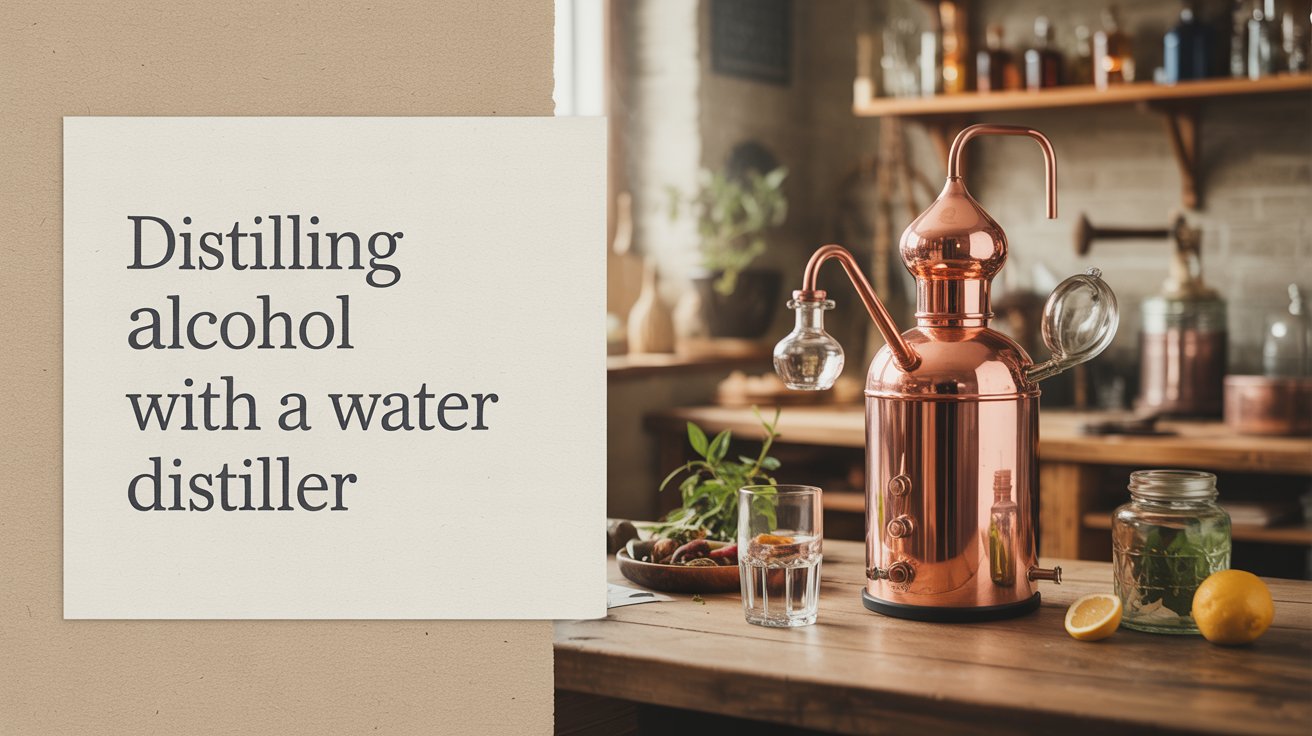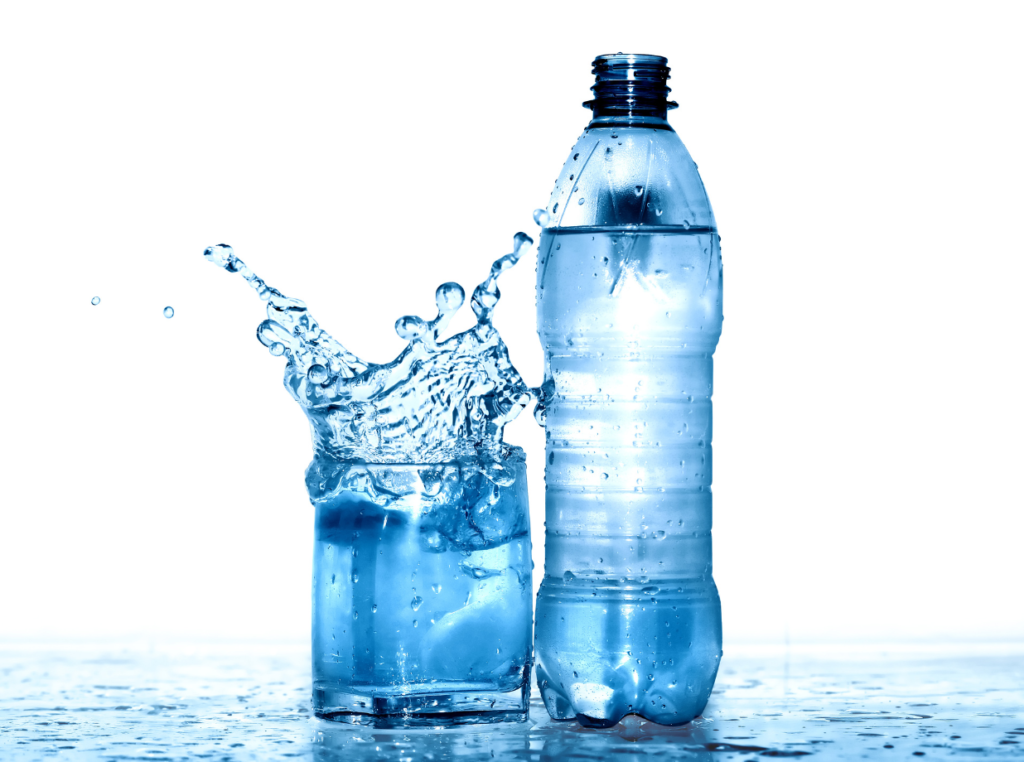Distilling alcohol is the process of separating the alcohol from a liquid mixture through evaporation and condensation. This process is commonly used to produce spirits such as whiskey, vodka, and rum. The basic principle behind distillation is that alcohol has a lower boiling point than water, so when the liquid mixture is heated, the alcohol vaporizes first and can be collected and condensed back into a liquid form. The result is a higher concentration of alcohol than the original mixture.
There are several different methods of distillation, but the most common for alcohol production is pot distillation and column distillation. Pot distillation involves heating the liquid mixture in a pot or kettle and collecting the alcohol vapor as it rises. Column distillation, on the other hand, involves passing the liquid mixture through a series of columns or trays to separate the alcohol from the other components. Both methods have their own advantages and disadvantages, and the choice of method will depend on the specific requirements of the alcohol being produced.
Choosing the Right Water Distiller for Alcohol Distillation
When it comes to choosing a water distiller for alcohol distillation, there are several factors to consider. The first consideration is the capacity of the distiller, which will depend on the volume of alcohol you plan to produce. It’s important to choose a distiller that can handle the amount of liquid you will be distilling, as trying to distill too much liquid at once can result in poor quality alcohol.
Another important factor to consider is the material of the distiller. Stainless steel is a popular choice for alcohol distillation as it is durable, easy to clean, and resistant to corrosion. Copper is also commonly used in distillation equipment as it has excellent heat conductivity and can help remove sulfur compounds from the alcohol. Additionally, consider the design and features of the distiller, such as temperature control, condensation efficiency, and ease of use.
Preparing Your Ingredients for Distillation
Before you begin the distillation process, it’s important to properly prepare your ingredients. The quality of your ingredients will have a significant impact on the final product, so it’s essential to use high-quality water and fermentable sugars. The water should be free from impurities and contaminants, as these can affect the taste and purity of the distilled alcohol. Additionally, using high-quality fermentable sugars, such as malted barley, corn, or sugar cane, will result in a better-tasting and higher-quality alcohol.
In addition to choosing high-quality ingredients, it’s important to properly prepare them for distillation. This may involve mashing or crushing the grains to release their sugars, or fermenting the sugars into alcohol before beginning the distillation process. Properly preparing your ingredients will ensure that you achieve the best possible results from your distillation process.
Setting Up and Operating Your Water Distiller
Once you have chosen the right water distiller and prepared your ingredients, it’s time to set up and operate the distiller. Start by assembling the distiller according to the manufacturer’s instructions, ensuring that all components are properly connected and sealed. Next, fill the boiler with your liquid mixture and turn on the heat source to begin heating the liquid.
As the liquid heats up, alcohol vapor will begin to rise and collect in the condenser. It’s important to monitor the temperature of the vapor to ensure that it remains within the optimal range for alcohol distillation. Once the vapor has been collected and condensed back into a liquid form, it can be collected and stored for further processing or consumption.
Monitoring the Distillation Process
During the distillation process, it’s important to closely monitor the temperature and flow rate of the vapor to ensure that you achieve the desired results. The temperature at which alcohol vaporizes is lower than that of water, so it’s important to maintain a consistent temperature throughout the distillation process. This can be achieved by adjusting the heat source or using a temperature control system if available.
In addition to monitoring the temperature, it’s also important to monitor the flow rate of the vapor through the condenser. If the flow rate is too high, it can result in poor condensation and lower purity of the distilled alcohol. Conversely, if the flow rate is too low, it can result in slower distillation and lower overall yield. By closely monitoring these factors, you can ensure that you achieve the best possible results from your distillation process.

Collecting and Storing the Distilled Alcohol
Once the distillation process is complete, it’s time to collect and store the distilled alcohol. Start by carefully removing the collected liquid from the condenser and transferring it to a storage container. It’s important to use clean and sterile containers to prevent contamination of the alcohol.
After collecting the distilled alcohol, it’s important to properly store it to maintain its quality and purity. Store the alcohol in a cool, dark place away from direct sunlight and heat sources. Additionally, consider using airtight containers to prevent oxidation and evaporation of the alcohol. Properly storing your distilled alcohol will ensure that it maintains its quality and flavor over time.
Safety Precautions and Legal Considerations for Distilling Alcohol at Home
Distilling alcohol at home can be a rewarding hobby, but it’s important to take proper safety precautions and consider legal regulations before getting started. When operating a water distiller for alcohol distillation, it’s important to follow all safety guidelines provided by the manufacturer. This may include wearing protective gear such as gloves and goggles, as well as ensuring that all components are properly sealed and secure.
In addition to safety precautions, it’s also important to consider legal regulations regarding home distillation of alcohol. In many countries, it is illegal to produce distilled spirits without a proper license or permit. Before beginning any home distillation project, be sure to research and understand the legal requirements in your area. This may involve obtaining a permit or license from local authorities, or simply ensuring that you are producing alcohol for personal use only.
In conclusion, distilling alcohol at home can be a fun and rewarding hobby when done safely and legally. By understanding the basics of distillation, choosing the right water distiller, preparing high-quality ingredients, setting up and operating your distiller properly, monitoring the distillation process, collecting and storing your distilled alcohol, and considering safety precautions and legal regulations, you can enjoy producing your own high-quality spirits at home. With proper knowledge and care, home distillation can be a fulfilling and enjoyable experience for any enthusiast.



